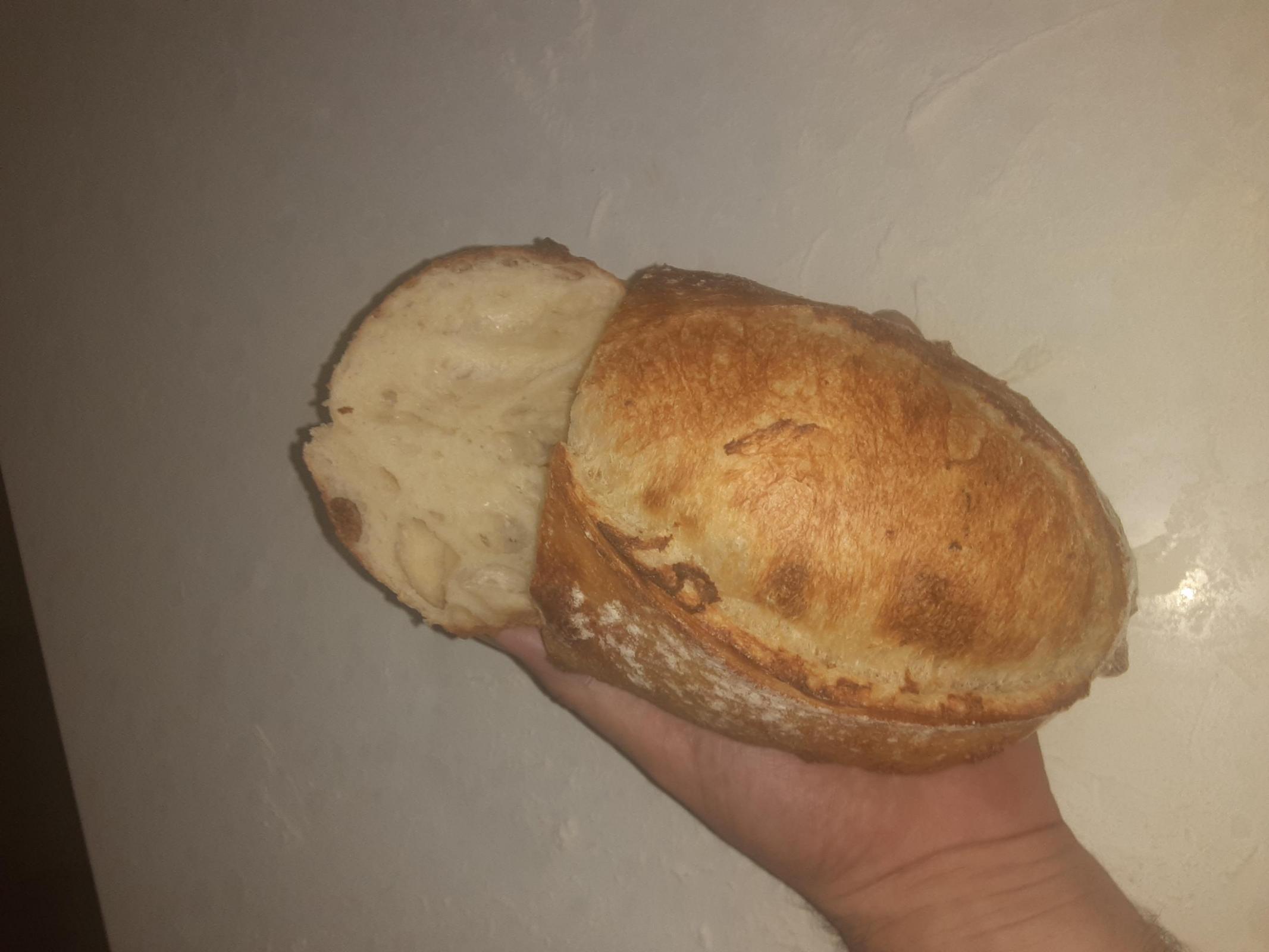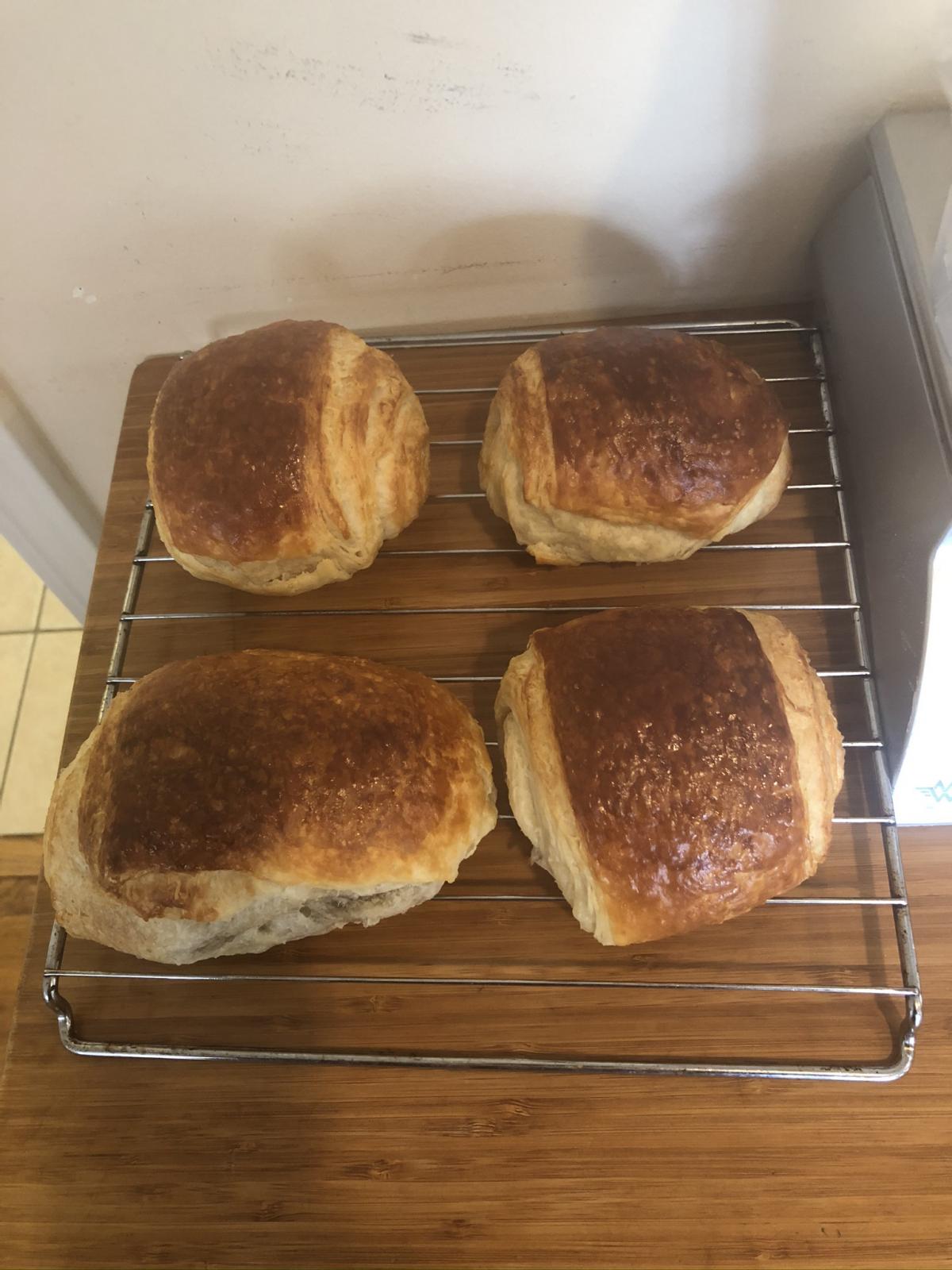
Koji Rice Porridge Sourdough
Cedarmountain here on TFL got me interested in making miso after he replied to my blog post about my red miso furikake sourdough. One major ingredient needed to make miso paste from scratch so I learned from him was koji rice. From Tartine Book No. 3 “Koji is the traditional Japanese food culture of rice inoculated with Aspergillus oryzae mold. It has been used for more than two thousand years to make miso, sake, soy sauce, amazements, pickles, and many other umami-rich foods that form the backbone of Japanese cuisine.” We have a local sake producer here in Toronto Canada that happens to sell koji rice. I plan on starting my miso making project soon but in the meantime I was very interested to taste koji rice and wanted to try making koji rice porridge sourdough.
I adapted the recipe from Tartine Book No. 3 and blended it with an oat porridge sourdough from Maurizio of The Perfect Loaf as I liked his methods in the past. This adapted formula has a lot of rice porridge in it, the rice is 50% in baker’s math and based on the photos in Tartine, I wasn’t expecting much oven spring from this bread since the rice porridge is such a high percentage of the dough and is weighing it down. I was still surprised at how flat the resulting loaf came out. If the flavour of the koji rice comes through strongly enough then I might be able to reduce the amount of koji rice in the bread and hopefully improve oven spring next time around. On the other hand it might also be that the bread is overproofed. The extra sugar in the dough from the koji may have moved fermentation along quickly and waiting for 45% rise in the dough may have been too much proofing since the dough had to overcome the weight of the rice. The crumb will show what the truth is as usual.
I should mention that the cooked koji rice is quite delicious and has a nice sweetness to it so one has to bake this bread at a lower temperature once the steaming portion of the bake is over.
0 hours - Levain build, 18g starter 36 g water and 36 g whole wheat flour ferment 80*f for 6 hours
6 hours - prepare koji rice 100 g with 200 g water - after cooked spread out on cookie tray, cover with aluminum foil while cooling
6 hours - Fermentolyse - mix water 252 g, 72 g levain, flours.
7 hours - mix salt using some water then do slap and folds to ensure well incorporated and build gluten.
730 hours - add cooled koji rice a little at a time folding well after each addition, you may need to add small splashes of water while folding in koji rice. Then start stretch and folds
Break of any large clumps of porridge with your fingers to break them up. Once first set stretch and folds complete remove small portion of dough to aliquot jar
8 hours - stretch and fold
830 hours - coil fold or consider a lamination
9 hours - coil fold
930 hours - coil fold
10 hours - coil fold
13 hours - end of bulk 6 hours after salt mixed - bulk rise 50% in aliquot jar - go to shaping - 30 mins bench rest then cold retard until baking next day
Following day - preheat oven with dutch oven at 500*F for 1 hour
Bake in dutch oven 20 mins the drop temperature to 450*F keeping lid on, then remove cover and drop temperature to 375-400*F (dough has a lot of sugar so will brown quickly) and complete bake may take 30 mins or so before crumb fully baked.




















 13 was well spent.
13 was well spent. 




